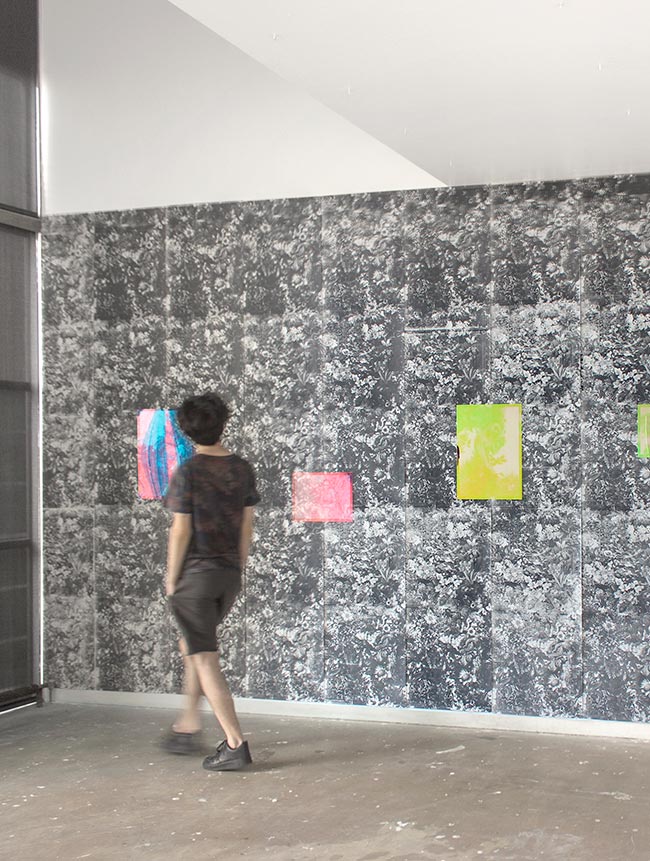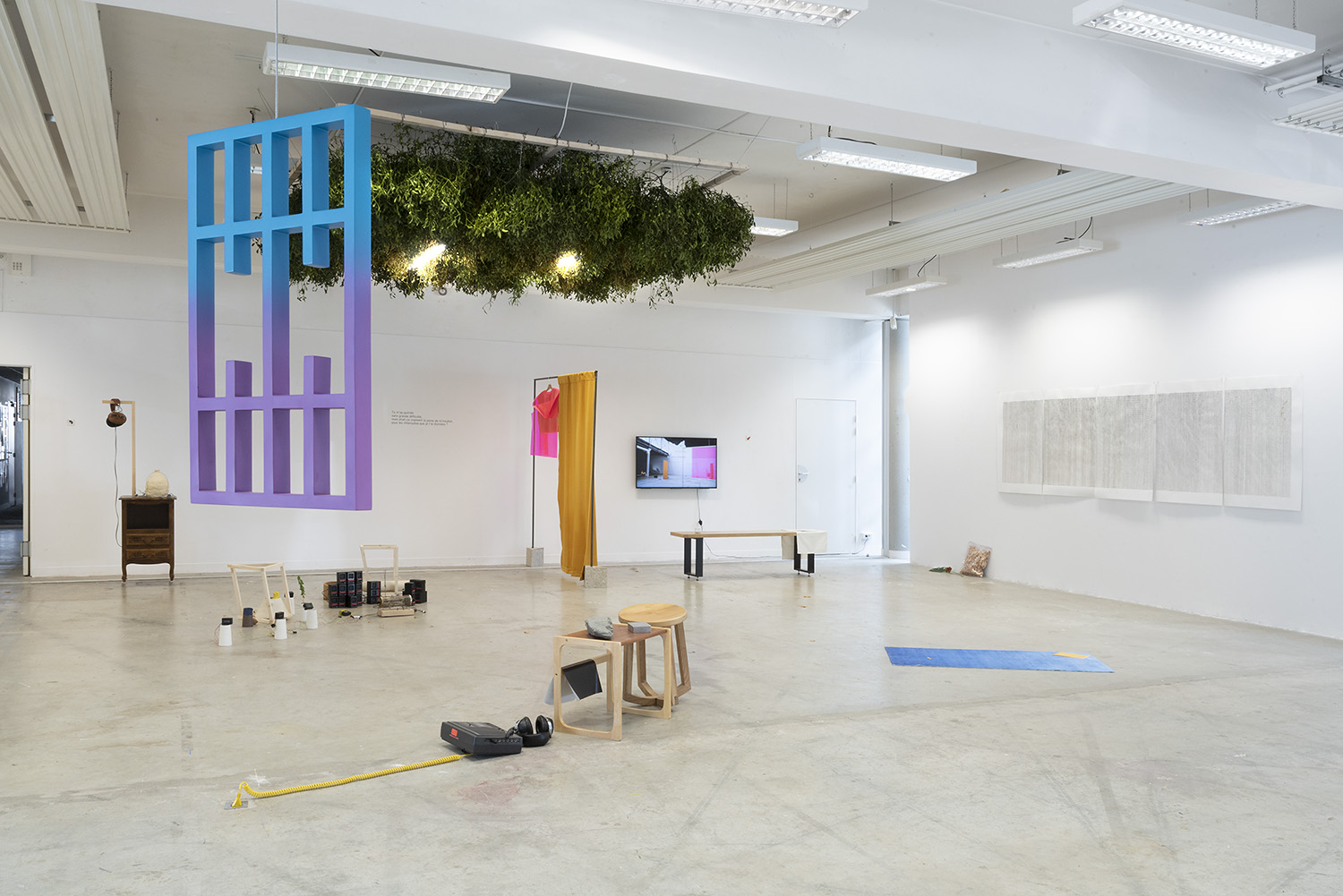
The École Supérieure d’Art de Clermont Métropole is a public institution for higher education devoted to the teaching of art.
L’École Supérieure d’Art de Clermont Métropole (ÉSACM) (Clermont-Ferrand School of Fine Arts) is a public higher education establishment specialising in fine arts. On 1st July 2010 the ÉSACM became a Public Institution for Cultural Cooperation, jointly financed by the Clermont Auvergne Métropole, the state (department of cultural affairs), the City of Clermont-Ferrand, the Region Auvergne-Rhône-Alpes, and patronage.
Favouring a non-specialized approach to training in the visual arts within its art department, the ÉSACM provides demanding and open education (drawing, painting, printing, sculpture, installations, photography, video, cinema, digital practices, contemporary art, art history, philosophy, literature etc.), enabling all students to develop, nourish and broaden a personalized method which is committed to contemporary design.
The school is certified by the French Ministry for Culture and Communication, which enables it to award two state-certified art degrees: the « National Diploma in Art » (Diplôme National d’Art – DNA) which confers the bachelor’s degree, and the « National Diploma in Plastic Arts » (Diplôme National Supérieur d’Expression Plastique – DNSEP) which confers the master’s degree, and which are awarded after 3 and 5 years respectively. While the school’s aim is to train artists, it also provides training for various occupations involving art and culture, and enables everyone to follow their own professional path. The master’s degree enables students to continue on to other master’s degrees, which include professional ones, to doctoral level art school degrees and university doctorates.
The ÉSACM has also a research cooperative, that generates invitations, conferences, seminars, travel, workshops, publications, shows and exhibitions etc., implement art research through art. Every year, Master’s students join research teams. These are assisted by the Research Cooperative, which brings together experienced resident researchers and student researchers. The 3rd cycle enables student researchers to continue their research work over 3 years, leading to the award of the DSRA (Diplôme Supérieur de Recherche en Art).
ÉSACM is part of France’s network of 43 Écoles Supérieures d’Art, and has joined the network of 4 schools of the Auvergne-Rhône-Alpes region. This means that we are both one-of-a-kind within our region as well as being at the heart of a vast network of employment, exchange and collaboration. The school is at the centre of the ecosystem of contemporary art and culture in Auvergne through various collaborations, with the Les Ateliers association, Artistes en résidence association, the École Nationale Supérieure d’Architecture, the Fonds Régional d’Art Contemporain, the International Short Film Festival, the Tôlerie (Clermont-Ferrand), Creux de l’Enfer (Thiers) and Abbaye Saint-André (Meymac) arts centres, together with Clermont Auvergne University. However, these collaborations need to resonate with projects outside our geographical region but within the scope of our projects, thought processes and exchanges. Carrying out an « international » project for our school needs to enable everyone to experience the contemporary world in their own way. Taught throughout their studies in English, students have various possibilities with regard to mobility. So during the 2nd cycle, they can do arts residencies in New York, Cotonou (Benin), or Lima (Peru).
The school is therefore above all a space for sharing, experimenting and designing, as a way of encouraging originality, ideas and shapes.
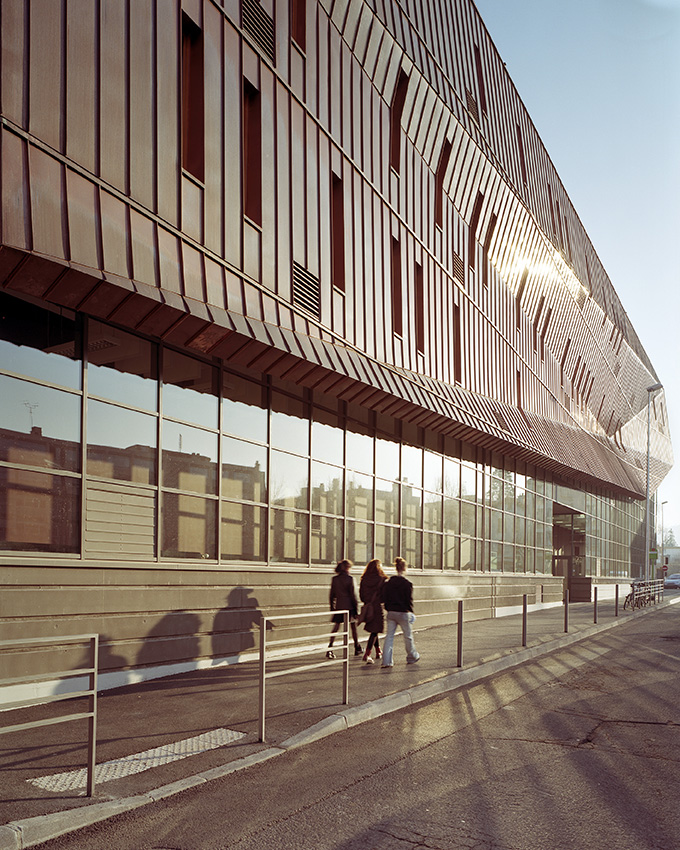
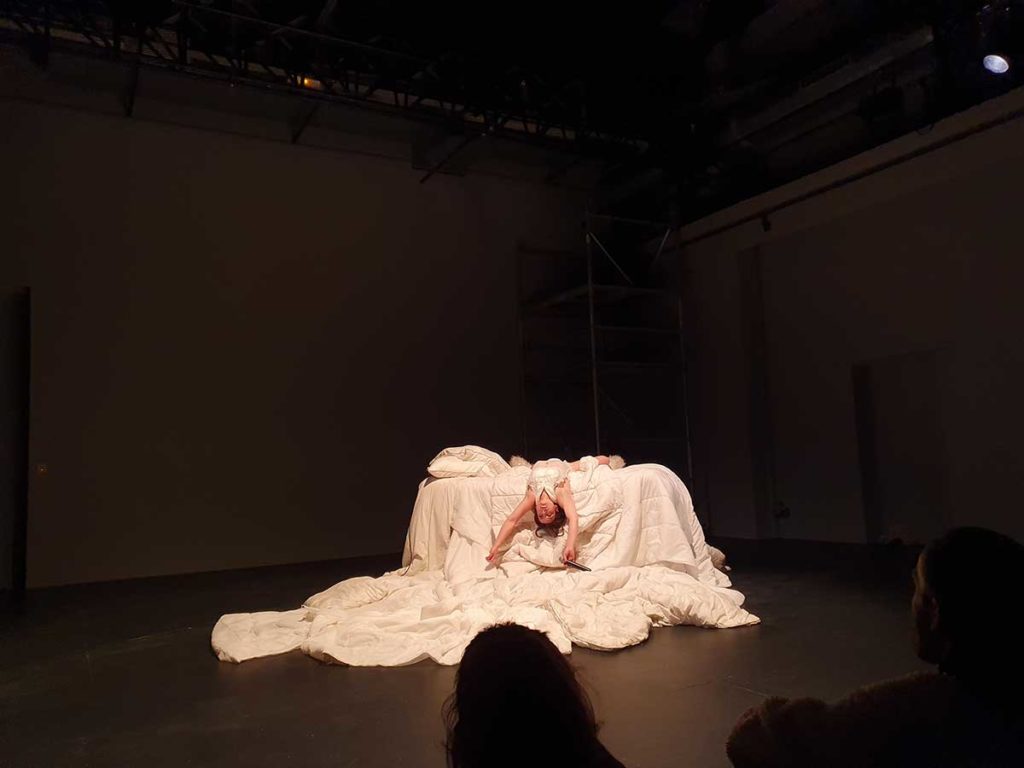
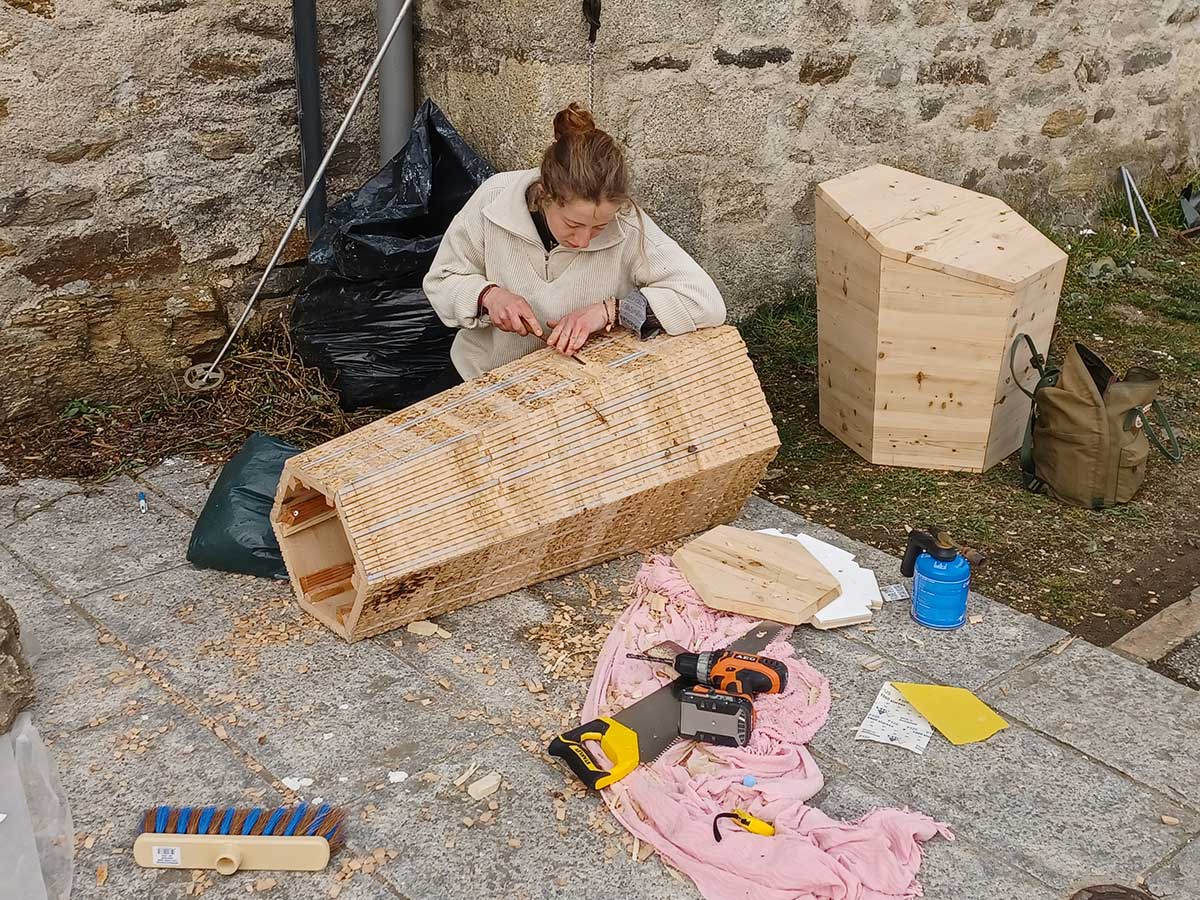
EDUCATION, QUALIFICATIONS
Education of a high standard
The School aims to produce top-notch artists and creators. The educational programme is personal project-focused and based on a broad spectrum of practical and theoretical approaches. There are classes and workshops in areas such as video, installation art, writing, painting, audio, graphics, digital arts, photography, sculpture, art history, aesthetics, plus trips and conferences.
Courses are taught by working artists and prominent thinkers in the contemporary creative scene. In addition, every year, dozens of professional artists, philosophers, university researchers, writers and musicians from outside the School are invited to give their own classes.
State-certified qualifications within a european framework
The School’s post-baccalaureate educational programme leads to 2 state-certified qualifications – Art option:
– The Bachelor’s degree Diplôme National d’Art (DNA) obtained after three years
– The Master’s degree Diplôme National
Supérieur d’Expression Plastique (DNSEP) obtained after five years
The School’s educational programme is compliant with the European framework for higher education and the European Credit Transfer System (ECTS). This ensures perfect alignment with the Europe-wide higher education network. DNA and DNSEP allow students to enter all European universities at a direct equivalent level.
Career perspectives
Eighty percent of students find employment in their field of study within three years of graduating.
An in-house study of the School’s graduates carried out between 1999 and 2014 found that 89% work in a field related to their studies: 64% have a profession related to artistic creation, 31% are teachers, 22% work in cultural organisations or in communication. 81% declare continuing their art practice, in a professional framework for 34% of them.
Graduates pursue wide-ranging careers: as artists, exhibition managers and curators, teachers, mediators and cultural liaison officers, multimedia designers, graphic artists, art critics, restorers, gallery owners, cultural project managers, designers, photographers, illustrators, web designers, artistic directors, producers, film makers, technicians, decorators, camera operators, and many more.
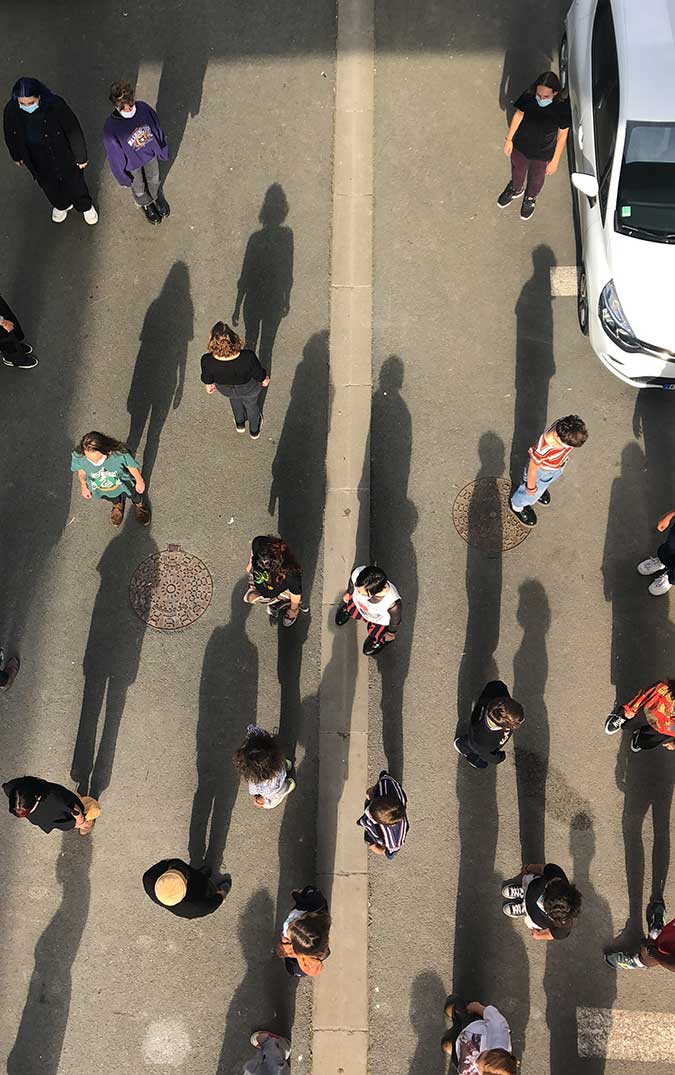
EDUCATIONAL TOOLS
« Fabriques »
« Fabriques » are collective creating and learning spaces, gathering students from 1rst to 5th year around a commun area of questions. These subjects and questions are picked collectively by students, teachers, and art professional periodically involved. « Fabriques » are attended weekly, all year long, and offer a cross-cutting approach, with theorical and practical aspects. « Fabriques » settle collective learning situations, in order to support the students personal project.
« Prismes »
Those workshops are designed for 1rst and 2nd year students to approach shapes, mediums, gestures and questionings in a transdisciplinary way. Each « prismes » is provided by several teachers, and combine theorical and practical fields, for the student to discover its own langage.
« Focus »
« Focus »are educational sessions concentrated on technical, theorical, or methological subjetcs that are not tackled during courses. These are facilitated all year long, upon request of students or suggested by teachers, to develop the knowledge and technic skills they need to elaborate their personal project.
Workshops
Ad hoc workshops give students a privileged opportunity to work with guest professionals from outside. Workshops take place throughout the year and last between a day and a week.
@@@@@@@@
@@@@@@@@@@@@@@@@@@@@@@@@@@@@@@@@@@@@@@@@@@@@@@@@@@@@@@@@@@@@@@@@@@@@@@@@@@@@@@@@@@@@@@@@@@@@@@@@@@@@@@@@@@@@@@@@@@@@@@@@@@@@@@@@@@@@@@@@@@@@@@@@
@@@@@@@@@@@@@@@@@@@@@@@@@@@@@@@@@@@@@@@@@@@@@@@@@@@@@@@@@@@@@@@@@@@@@@@@@@@@@@@@@@@@@@@@@@@@@@@@@@@@@@@@@@@@@@@@@@@@@@@@@@@@@@@@@@@@@@@@@@@@@@@@@@@@@@@@@@@@@@@@@@@@@@@@@@@
@@@@@@@@@@@@@@@@@@@@@@@@@@@@@@@@@@@@@@@@@@@@@@@@@@@@@@@@@@@@@@@@@@@@@@@@@@@@@@@@@@@@@@@@@@@@@@@@@@@@@@@@@@@@@@@@@@@@@@@@@@@@@@@@@@@@@@@@@@@@@@@@@@@@@@@@@@@@@@@@@@@@@@@@@@@
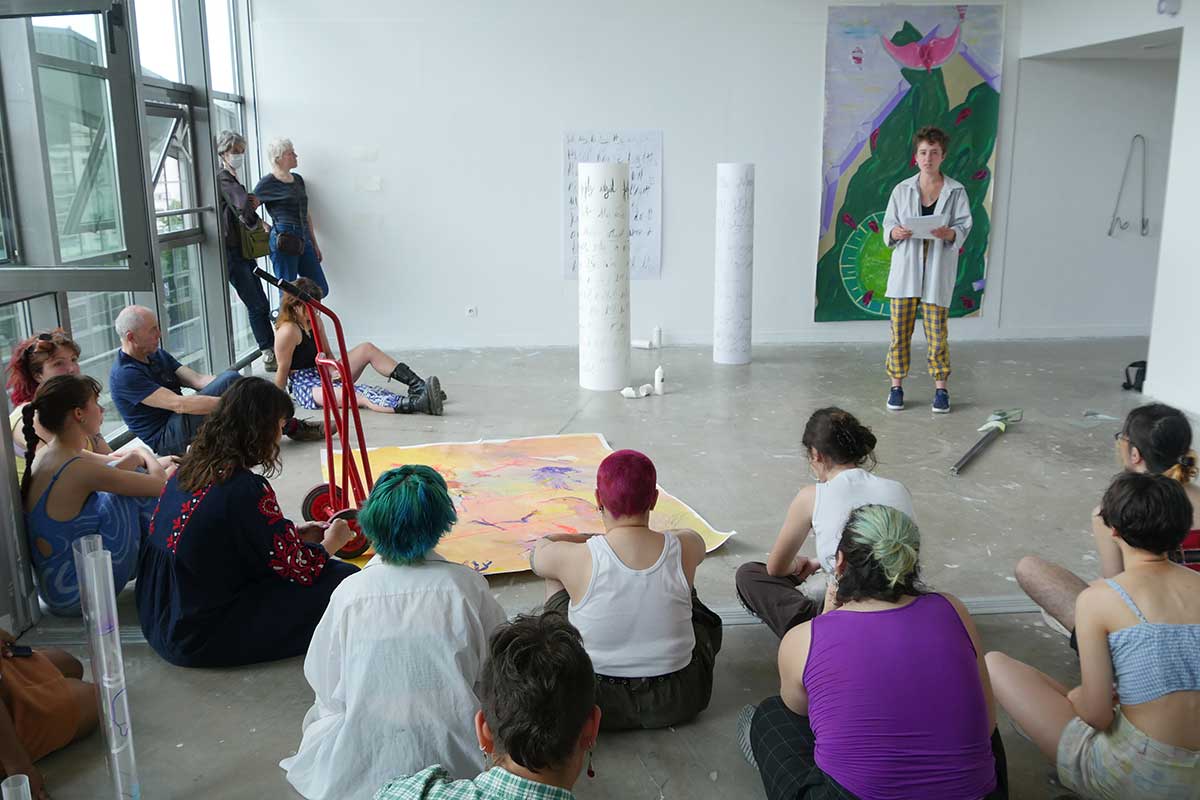
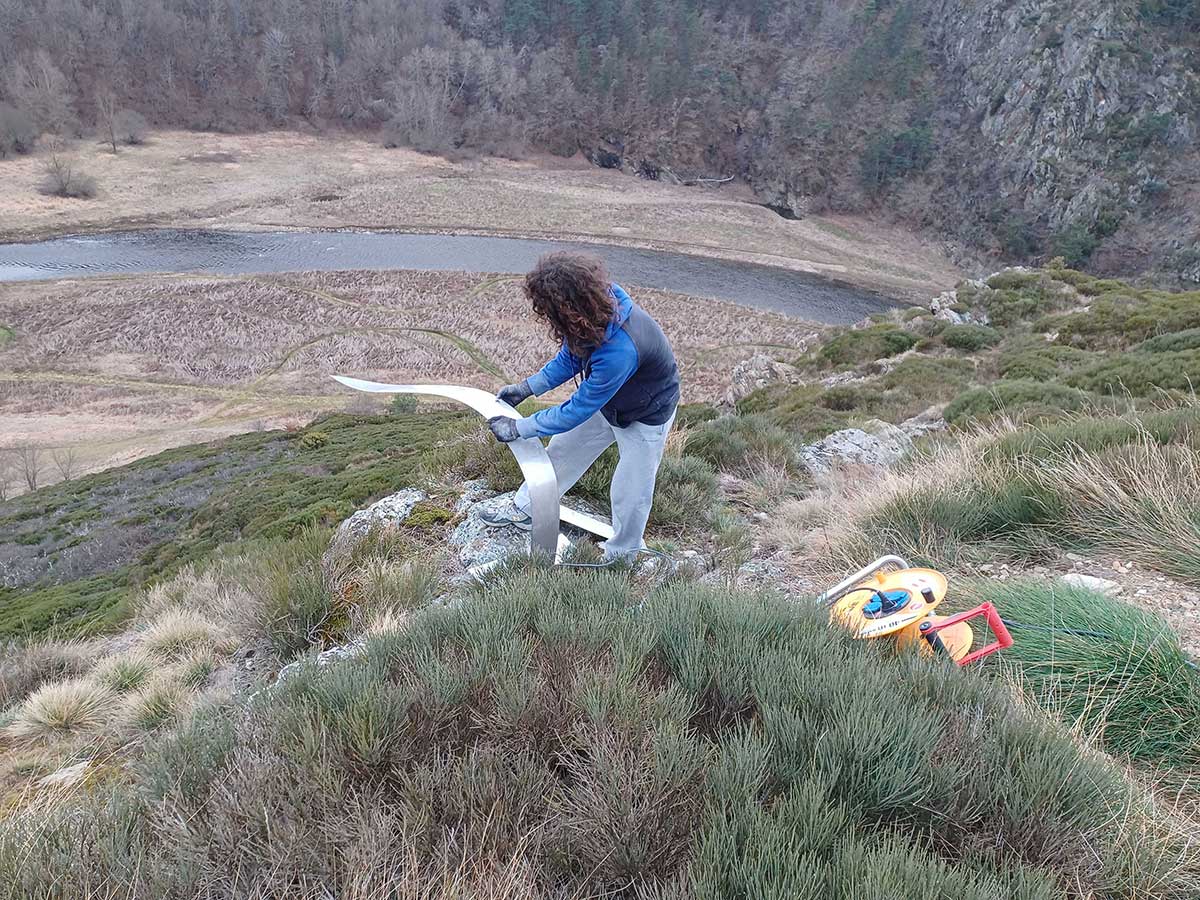
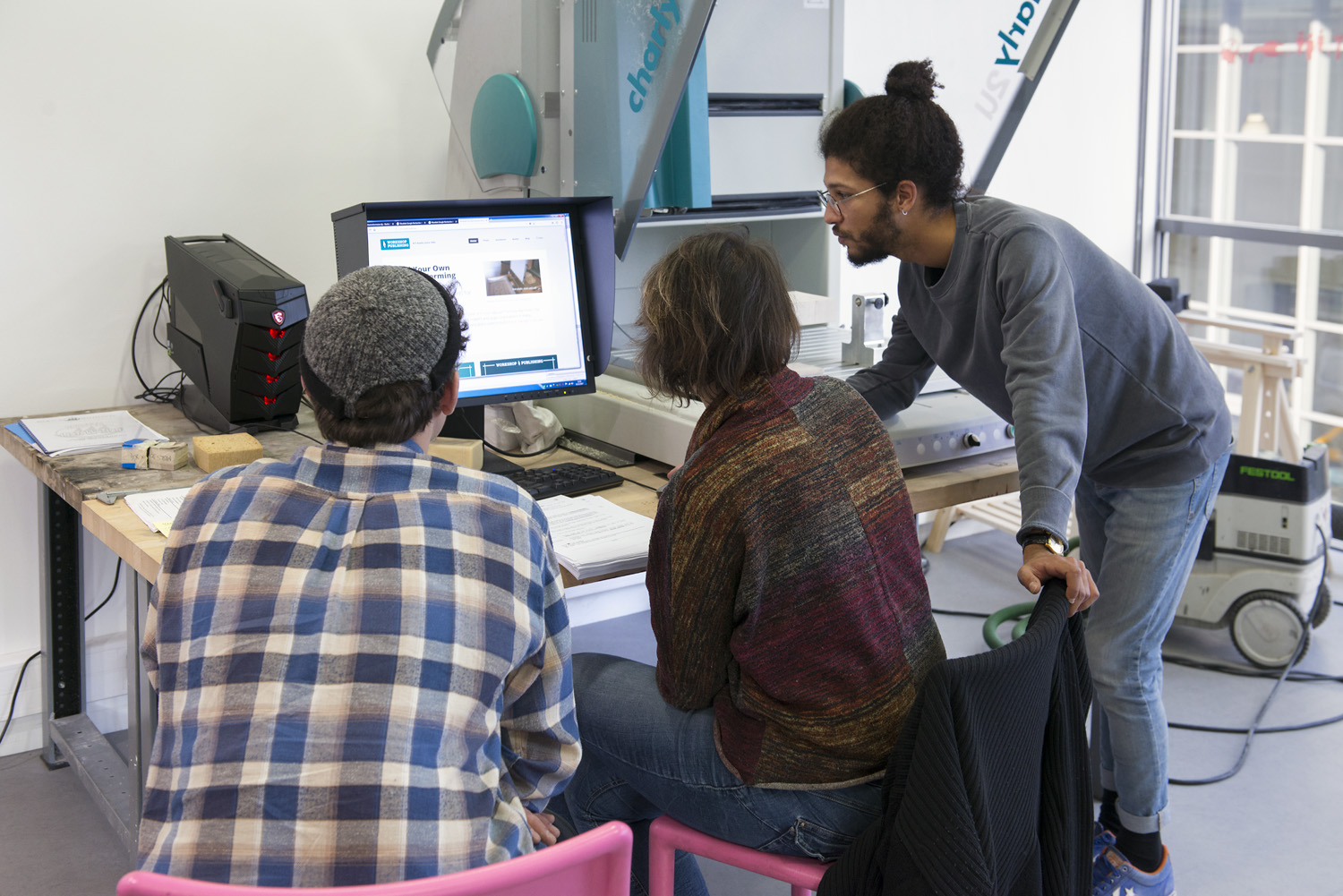
Conferences
Throughout the course of the year, artists, exhibition curators, museum managers, gallery owners and art thinkers present their work or their field of research. Some of these conferences are open to the public.
Exhibition visits, study trips, seminars
Study visits and seminars take place regularly and are an integral part of the teaching programme. Students of the Project phase also have the option of attending seminars which take place outside the school, the topics of which are linked to their own research.
Group workshops and work spaces
Students work in group workshops which promote discussion and ongoing work in the school. They also have access to areas for experimenting with spatial installation of their research and work, and workshops associated with specific techniques and tools, including photographic laboratories, print room, sculpture workshop, carpentry, printed art workshops, video and sound studios.
FabLab
The school also has a Fablab – manufacturing laboratory – for developing practices and artistic projects, open to students from the school and to the general public. The FabLab is a place for sharing, discussing and experimenting, and has a 3D printer, a laser cutter and engraver, a milling machine, a Kinect, a cutting plotter, an embroidery machine, electronic and robotic equipment etc.
Library
The School’s library specialises in contemporary art and contains over 7000 documents: exhibition catalogues from France and around the world, works on art theory and techniques, reference works, arts periodicals and audiovisual and digital material.
Equipment and resources available
The school provides students with the main tools and consumables required for inductions and work carried out in the main artistic disciplines, so they can borrow cameras, use photographic apparatus and premises, recorders etc. to achieve their projects. Study trips and travel in France and abroad organised by the school are also financed to a large extent by the ESACM. The Michelin Foundation also provides assistance towards production for 3rd and 5th year students for work carried out as part of their degree, subject to the financial package allocated to each.
CURRICULUM
FIRST CYCLE
Year one / Semesters 1 and 2
Devoted to basic learnings, the initial year is a real preparation to further education. It allows the student to measure her/his motives and determine the cycles and options of higher artistic education s/he should choose. Divided into two semesters, the curriculum is made up of practical and theoretical courses, as well as encounters with representatives of the worlds of art and culture, lectures and exhibition visits (which the student must attend).
The students, through the modules and new practices, are led to change their working habits. They have to get rid of their old school habits. The goals of the initial year are : initiation to methodology, creation in the field of visual arts and immersion in the artistic culture. The objective is to have the students : acquire the technical bases and the conceptual tools necessary to art studies, increase their work and research abilities, develop their analysis abilities, imagine their relation to the world.
2nd and 3rd years
Extension of the fundamental artistic bases, the goals of the “Phase programme” are: a confrontation with spheres of knowledge and the problematics of today’s art and creation, plastic experimentations within different media, the mastery of conceptual, technical and technological tools. Divided into 4 semesters, the curriculum aims to give students a working method allowing them to follow their own way. This method is progressive and suited to the student’s personality and evolution. It allows him / her to go from: thematic questioning to the definition of a problematics, mastery of the tool to its appropriation, practice to creative path, then to production.
DNA
Taken at the end of the third year, the Diplôme National d’Art (DNA) allows students to enter university. The Diplôme National d’Art comprises three tests: an examination of the student’s academic profile and results, a presentation by the student of a selection of significant works done during the three years of studies, an interview with the examining committee.
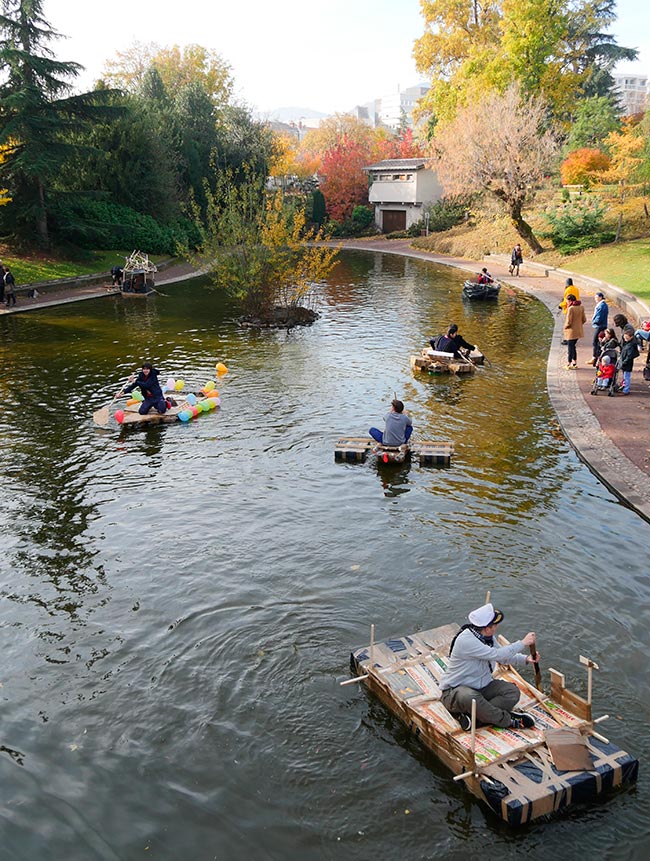
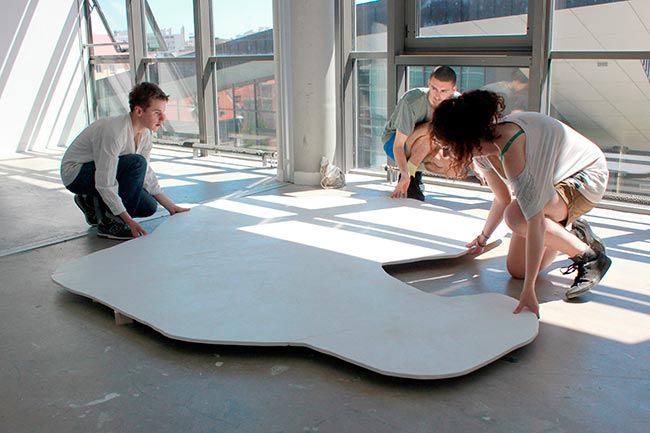
SECOND CYCLE
4th and 5th years
The “Phase projet” represents a second cycle of higher artistic education. The student is involved in a personal quest based on an open and well-thoughtout practice that can be elaborated through any artistic means. Experimenting with the most diverse tools and assimilating a theoretical and historical knowledge leads students to come up with a project and to define their own vision of the world. During Year 4, the emphasis is placed on experimentation, open-mindedness and research; during Year 5, the students refocus their quest and elaborate personal proposals.
During the “Phase projet”, numerous things are at stake. It aims to help students to: optimize their theoretical, technical and practical skills, build a personal search and commitment, inscribed within the multiple and open framework of contemporary art, achieve an autonomous conception and realization; ensure the professional quality of their production; acquire an acute sense of how their work will be exhibited and received.
MASTER / DNSEP
Taken at the end of the fifth year, the Master or Diplôme National Supérieur d’Expression Plastique (DNSEP) has a level I homologation. It can lead to postgraduate studies or to post-degree studies in higher art schools. The Diplôme National Supérieur d’Expression Plastique comprises four tests: an interview about the theoric memory then, an examination of the student’s academic profile and results, an interview with the examining committee, presentation/display of the work.
